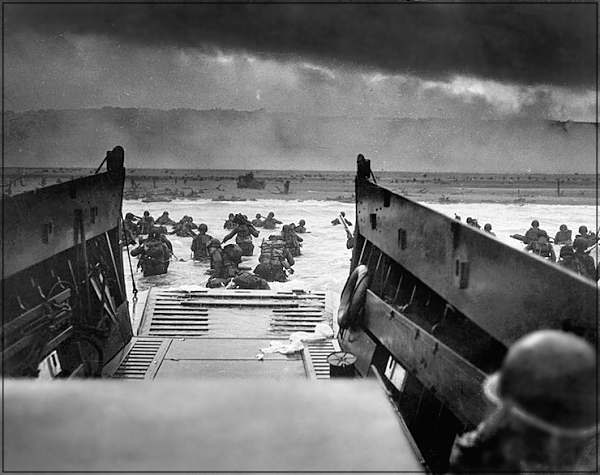The breakdown of US casualties was 1465 dead, 3184 wounded, 1928 missing and 26 captured. Of the total US figure, 2499 casualties were from the US airborne troops (238 of them being deaths). The casualties at Utah Beach were relatively light: 197, including 60 missing. However, the US 1st and 29th Divisions together suffered around 2000 casualties at Omaha Beach.
Over 425,000 Allied and German troops were killed, wounded or went missing during the Battle of Normandy. This figure includes over 209,000 Allied casualties, with nearly 37,000 dead amongst the ground forces and a further 16,714 deaths amongst the Allied air forces. Of the Allied casualties, 83,045 were from 21st Army Group (British, Canadian and Polish ground forces), 125,847 from the US ground forces. The losses of the German forces during the Battle of Normandy can only be estimated. Roughly 200,000 German troops were killed or wounded. The Allies also captured 200,000 prisoners of war (not included in the 425,000 total, above). During the fighting around the Falaise Pocket (August 1944) alone, the Germans suffered losses of around 90,000, including prisoners.
-SourceVery little went as planned at Omaha on D-Day. Difficulties in navigation caused the majority of landing craft to miss their targets throughout the day. The defenses were unexpectedly strong and inflicted heavy casualties on US troops as they landed. Under heavy fire the engineers struggled to clear the beach obstacles, causing later landings to bunch around the few channels that had been cleared. Weakened by the casualties taken just to land, the surviving assault troops could not clear the heavily defended exits off the beach, causing further problems and consequent delays for later landings. Small penetrations were eventually achieved by groups of survivors making improvised assaults, scaling the bluffs between the most heavily defended points. By the end of the day two small isolated footholds had been won and which, against weaker defenses further inland, were subsequently exploited to achieve the original D-Day objectives over the following days
As infantry disembarked from the landing craft, they found themselves almost everywhere on sandbars 50 to 100 yards (45 to 90 m) out. Before they could even reach the beach they had to wade through water sometimes neck deep, and they still had a 200 yard (180 m) or more journey to go when they did reach the shore. Those that made it to the shingle did so at a walk, so heavily laden were they. Most sections had to brave the full weight of fire from small arms, mortars, artillery and the heavy interlocking fields of machine gun fire.[27]
-Source

Log in to comment